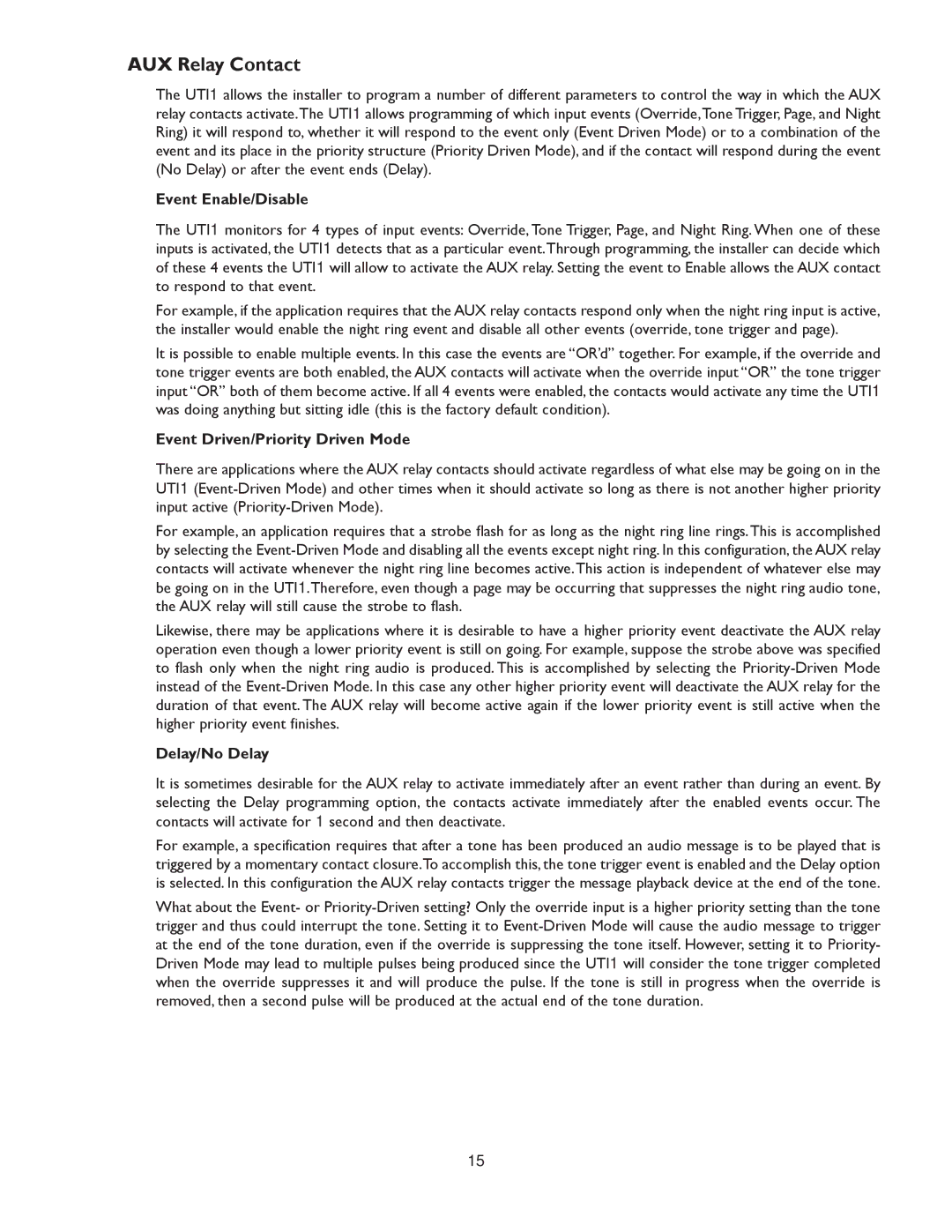AUX Relay Contact
The UTI1 allows the installer to program a number of different parameters to control the way in which the AUX relay contacts activate.The UTI1 allows programming of which input events (Override,Tone Trigger, Page, and Night Ring) it will respond to, whether it will respond to the event only (Event Driven Mode) or to a combination of the event and its place in the priority structure (Priority Driven Mode), and if the contact will respond during the event (No Delay) or after the event ends (Delay).
Event Enable/Disable
The UTI1 monitors for 4 types of input events: Override, Tone Trigger, Page, and Night Ring. When one of these inputs is activated, the UTI1 detects that as a particular event.Through programming, the installer can decide which of these 4 events the UTI1 will allow to activate the AUX relay. Setting the event to Enable allows the AUX contact to respond to that event.
For example, if the application requires that the AUX relay contacts respond only when the night ring input is active, the installer would enable the night ring event and disable all other events (override, tone trigger and page).
It is possible to enable multiple events. In this case the events are “OR’d” together. For example, if the override and tone trigger events are both enabled, the AUX contacts will activate when the override input “OR” the tone trigger input “OR” both of them become active. If all 4 events were enabled, the contacts would activate any time the UTI1 was doing anything but sitting idle (this is the factory default condition).
Event Driven/Priority Driven Mode
There are applications where the AUX relay contacts should activate regardless of what else may be going on in the UTI1
For example, an application requires that a strobe flash for as long as the night ring line rings.This is accomplished by selecting the
Likewise, there may be applications where it is desirable to have a higher priority event deactivate the AUX relay operation even though a lower priority event is still on going. For example, suppose the strobe above was specified to flash only when the night ring audio is produced. This is accomplished by selecting the
Delay/No Delay
It is sometimes desirable for the AUX relay to activate immediately after an event rather than during an event. By selecting the Delay programming option, the contacts activate immediately after the enabled events occur. The contacts will activate for 1 second and then deactivate.
For example, a specification requires that after a tone has been produced an audio message is to be played that is triggered by a momentary contact closure.To accomplish this, the tone trigger event is enabled and the Delay option is selected. In this configuration the AUX relay contacts trigger the message playback device at the end of the tone.
What about the Event- or
15
